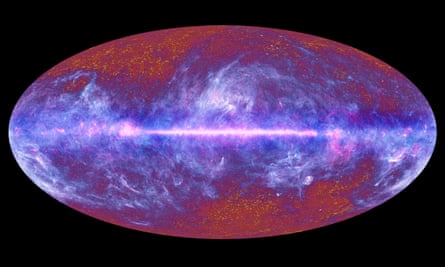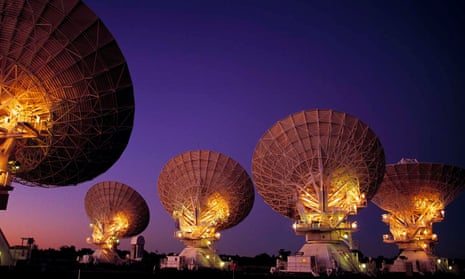Mysterious streams of microwaves that come from far across the galaxy have been traced to immense clouds of spinning diamonds that swirl around newly-born stars.
Astronomers have been stumped by the strange waves since they were first spotted more than 20 years ago, but now appear to have solved the puzzle after training US and Australian telescopes on rings of dust that circle stars about 500 light years from Earth.
Observations from the Green Bank Telescope in West Virginia and the Australia Telescope Compact Array in New South Wales found that the microwaves emanate only from stars which are surrounded by vast quantities of diamond particles which rotate tens of billions of times per second.
The diamond dust motes are only a millionth of a millimetre wide and so light that when they bump into each other they spin fast enough to emit microwaves which spread out across the universe, the scientists report in Nature Astronomy.
Researchers first became aware of what are called “anomalous microwave emissions” in 1996 when Nasa’s Cobe satellite created a full-sky map of radiation still visible from the big bang. The map revealed that some parts of the sky were inexplicably brighter in microwave frequencies than others.

Photograph: Handout/AFP/Getty Images
Until now, the most popular explanation had the microwaves coming from dust grains made of carbon-rich molecules called polycyclic aromatic hydrocarbons (PAHs). But doubt was cast on that theory when astronomers noticed that the microwaves did not always come from the same places as PAH clouds.
The latest discovery owes more to chance than design. Jane Greaves, an astronomer at Cardiff University, was observing belts of gas and dust around 14 massive young stars in the hope of catching planets in the act of formation. But when she looked over her data she found a spike in microwaves coming from the dusty disc around one of the stars.
Greaves discussed the spike with her colleague Anna Scaife at Manchester University who, it turned out, had seen similar peaks in microwaves coming from two other stars. It so happened that the three stars are the only ones known to be circled by discs of diamond dust. “I said: ‘We’ve got three here and they are the only three stars anywhere known to have these diamonds around them,’” said Greaves. “That was quite a shock.”
The three stars are V892 Tau, in the constellation of Taurus in the northern sky, and HD 97048 and MWC 297, in the constellations of Chamaeleon and Serpens in the southern sky, respectively. The clouds of tiny diamonds around these three stars emitted microwaves ranging from 20GHz to 50 GHz, the astronomers found.
At 0.75 to 1.1 millionths of a millimetre long, the diamond dust particles are vanishingly small. But Greaves estimates that stuck together, those around each star would weigh as much as the planet Mercury. When they are set spinning the particles emit microwaves because their electric charges are unevenly distributed, making one end of each nanodiamond positive and the other negative.
How the nanodiamonds are made in the first place is less clear, but they could form out of hot carbon vapour, or be thrown into space from exploding stars, where they drift and ultimately end up circling other newly-born stars.
Some tiny diamonds end up in meteorites and eventually make their way to Earth. In April, astronomers reported that diamond particles found in a lump of space rock that exploded over the Nubian desert in Sudan a decade ago formed deep inside a “lost planet” that circled the fledgling sun before it was torn apart in the early solar system.
